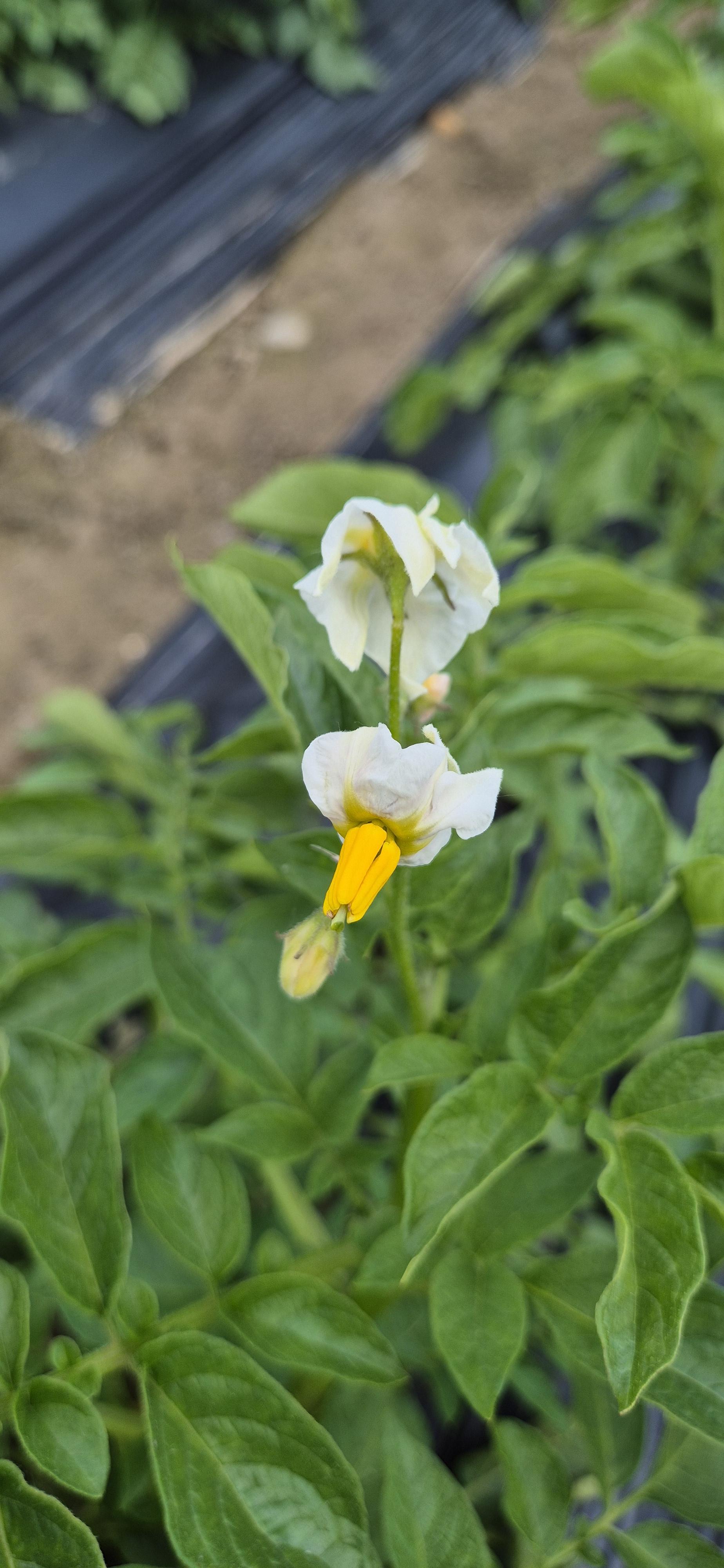고정 헤더 영역
상세 컨텐츠
본문
감자꽃
감자는 추운 지역이나 4,000m 고산지대에서도 재배가 가능하고, 3개월이라는 짧은 기간내에 수확이 가능하며 양분을 땅속에 저장하므로 전란에도 피해가 적다.[11][12] 척박한 환경과 가뭄에 강하며, 다 자라지 않은 상태에도 수확하여 식용할 수 있고, 수확 후 별도 가공없이 즉시 요리가 가능하므로 가난한 농부에게는 경제적이다.[13][14] 식용하는 부위는 뿌리가 아니고 줄기이며 이를 덩이줄기라 한다.[15]
한국에서는 하지감자, 지슬, 북감저(北甘藷), 마령서(馬鈴薯)라고도 한다.
한반도에는 1824년에 처음 전래되었으며 본격적으로 재배를 한 시기는 한국전쟁이후 부터이다.
한국인에게 감자란 가난의 상징이고 먹을 것이 없던 시절을 연상하게 하는 말이기도 하다.
제주도에서는 시설재배를 통해 2월에 출하하고 내륙지방에서는 6월말, 강원특별자치도 고랭지 감자는 10월에 수확하므로 1년내내 신선한 감자를 맛볼 수 있다.
한국으로의 전래
감자는 1824년(순조 24)경에 조선에서 산삼(山蔘)을 찾기 위해 숨어 들어온 청나라 사람들이 식량으로 쓰려고 몰래 산간지역에 경작하면서 한반도에 들어온 것으로 알려져 있다.
청나라 심마니들이 식량을 메고 다닐 수 없으니 길목마다 감자를 심어놓고 양식이 떨어지면 사용할 비상식량이었다는 것이다.
이규경이 쓴 《오주연문장전산고》에도 함경도에서 떠도는 말로 "감자가 강을 건넜다"는 말이 있는데 청나라 심마니들이 국경을 넘어 감자를 심는다는 뜻이라고 한다.
자료출처 : 위키백과
potato flower
Potatoes can be cultivated even in cold areas or at altitudes of 4,000m, and can be harvested within a short period of 3 months. Since nutrients are stored underground, there is little damage from egg loss.[11][12] It is resistant to harsh environments and droughts, can be harvested and eaten even when it is not fully grown, and can be cooked immediately after harvest without any additional processing, making it economical for poor farmers.[13][14] The edible part is not the root but the stem, which is called the tuber.[15]
In Korea, it is also called hajigamja, jiseul, bukgamjeo (北甘藷), and maryeongseo (馬鈴薯).
It was first introduced to the Korean Peninsula in 1824, and its cultivation began in earnest after the Korean War.
To Koreans, potatoes are a symbol of poverty and are reminiscent of a time when there was nothing to eat.
In Jeju Island, potatoes are harvested in February through facility cultivation, in inland regions they are harvested in late June, and in the highlands of Gangwon Special Self-Governing Province, potatoes are harvested in October, so you can taste fresh potatoes all year round.
Introduced to Korea
It is known that potatoes were introduced to the Korean peninsula around 1824 (the 24th year of King Sunjo's reign) by Qing Dynasty people who came into hiding from Joseon to look for wild ginseng, secretly cultivating them in mountainous areas to use them as food.
It is said that since the Simmani of the Qing Dynasty could not carry food on their backs, they planted potatoes on every street corner and used them as emergency food to be used when food ran out.
In 《Ojuyeonmunjangjeonsango》 written by Gyu-gyeong Lee, there is a saying going around in Hamgyeong-do that says, “Potatoes crossed the river,” which is said to mean that the Simmani of the Qing Dynasty crossed the border and planted potatoes.
Data source: Wikipedia
감자꽃 유투브 동영상으로 보기










'꽃,나무이름 알아보기' 카테고리의 다른 글
| 산딸나무 (0) | 2024.05.27 |
|---|---|
| 국수나무 (0) | 2024.05.27 |
| 섬초롱꽃(Campanula takesimana) (0) | 2024.05.24 |
| 백장미 White rose’, symbol of Germany’s Nazi resistance movement (0) | 2024.05.24 |
| 하귤, Natsumikan,Amanatsu 나스미깡(夏蜜柑) 또는 아마나스(甘夏) (0) | 2024.05.23 |




